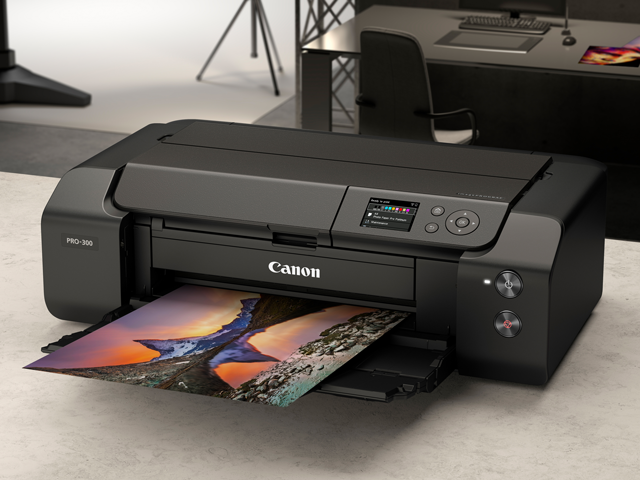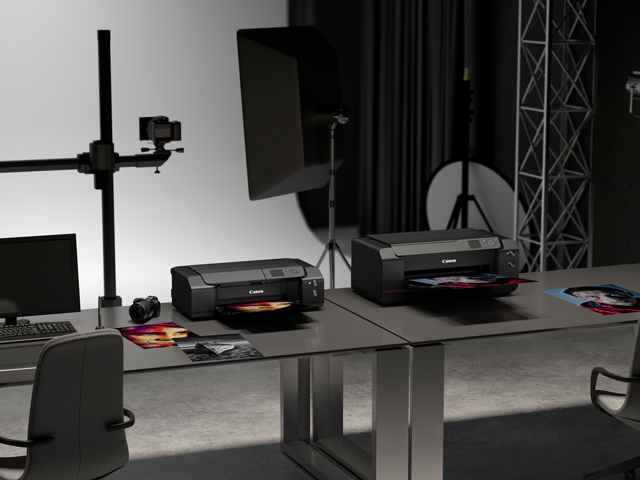Earlier this month, Canon announced some incredible new products including the EOS R5 and R6 mirrorless cameras, four new lenses, two telextenders and the Canon image PROGRAF PRO-300. Today, we are going to dive into the new imagePROGRAF PRO-300 Photo Printer.

The Canon imagePROGRAF PRO-300 will sit just above the PIXMA PRO-100 which is your entry-level into the pro printing market. There is also the PIXMA PRO-10 and the difference between the PRO-100 and the PRO-10 is moving from a dye-based ink system to a pigment-based ink system. From the PRO-10, the next step up would be the dramatically different imagePROGRAF PRO-1000.
So now, by adding the imagePROGRAF PRO-300, Canon essentially moved the image PROGRAF PRO line from 13 inches all the way to 60 inches. It sits similar to where the PRO-10 currently sits, at a slightly higher level due to its imagePROGRAF PRO status. In time, the PRO-300 will eventually be replacing the PRO-10.

Dye-based inks are great at the consumer-level and if you're not that concerned with archival quality, but if you're printing to put in a gallery, make a portfolio, or sell your prints, archival quality begins to matter quite a bit. That is where pigment-based inks come into play. To give a comparison, the PIXMA PRO-100 is more entry-level, similar to the Canon Rebel camera series, whereas the imagePROGRAF PRO-300 is more like an advanced APS-C camera, like the Canon EOS 90D.
The PIXMA PRO-10 uses Canon's Lucia pigment inks whereas the imagePROGRAF PRO-300 is using the Lucia PRO pigment ink tanks which is the same ink formulation that you will see in the PRO-1000, PRO-2100 and PRO-4100. They have even formulated the matte black ink to get even better black gradation on matte paper.

The PRO-300 will have better paper support and you can now support borderless printing on fine-art media because there is vacuum paper feeding. There is also a sku correction mechanism that will adjust the paper if it is placed at an angle. Although these printers shouldn't clog, it will have nozzle clog detection and it even comes with a 3" LCD screen. When it comes to its physical size, it's even smaller than the PRO-10, taking up about 85% of the space.
The ink cartridges are about the same size as the ink cartridges in the PRO-10. So if you are printing a lot, you will be replacing those cartridges frequently. If you're a photographer who is constantly printing high-quality work, you'd be better off with investing in the PRO-1000. If you're not printing on a regular basis, the PRO-300 is a perfect choice. One thing to note is that the PRO-300 doesn't support a roll feed so you'll need cut sheets.
The imagePROGRAF PRO-300 will be available at the end of July and is now available for $899.

